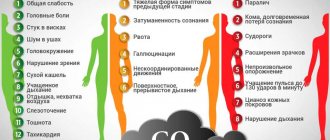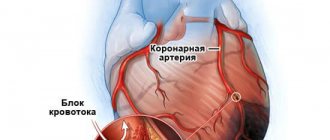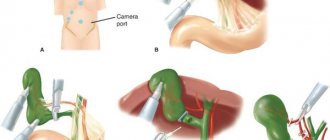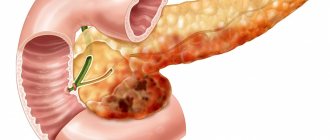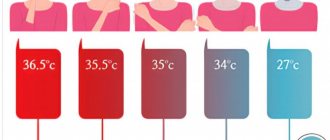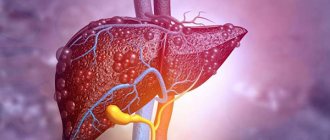Chlorine belongs to the biogenic elements of the halogen group and is present in the form of compounds in all living organisms.
Chlorine ions are involved in maintaining the osmotic balance of the internal environments of the body, ensuring water metabolism, reducing the activity of nerve cells, creating optimal conditions for the functioning of gastric juice enzymes and the production of hydrochloric acid. The daily intake of chlorine (minimum 0.8 g) is met mainly through table salt and NaCl.
Source: depositphotos.com
The simple substance chlorine is a toxic yellow-green gas with a pungent odor and metallic taste. It is highly soluble in water and organic liquids, due to which it is widely used in everyday life and in industry:
- disinfection of water (drinking water, waste water, in public places);
- bleaching fabrics at home and at work;
- component of pesticides for the destruction of insects and rodents;
- as a component of a chemical warfare agent;
- production of plastics and pure metals;
- as a food additive (E 925);
- for the production of medicines.
Due to its high toxicity, the use of chlorine is limited in a number of countries: when burning chlorine-containing waste, dioxin is formed, a dangerous poison with mutagenic, immunosuppressive, carcinogenic, teratogenic and embryotoxic effects.
The maximum permissible concentration of chlorine indoors is 0.1 mg/m3, in production – 1 mg/m3.
How does chlorine poisoning occur?
Most often, chlorine poisoning occurs in the following cases:
- inhalation of gas vapors;
- if a concentrated aqueous solution comes into contact with the skin and mucous membranes;
- accidental consumption of chlorine-containing liquids or toxic chemicals;
- taking chlorine-containing substances for the purpose of suicide;
- work in production with violations of safety regulations;
- visiting the pool (if the disinfection regime is incorrect).
Household chemicals and chlorine-containing insecticides or pesticides pose a particular danger to children, who may ingest them while playing. Such poisonings in pediatric practice often lead to death.
HOW TO ACT TO PREVENT FIRE
do not heat varnishes and paints on a gas stove, do not wash in gasoline or dry clothes over the stove; when handling holiday fireworks, crackers and candles, be extremely careful; avoid cluttering possible escape routes and storing explosive and fire-hazardous substances in the attic and basement; do not insert more than two plugs into one socket to avoid overheating; NEVER SMOKE IN BED
The fire occurred in 2021 in the region
Km² area of Magadan region
Firefighters from the Center went out to extinguish fires several times
times the Center's rescuers went out to eliminate emergencies and carry out rescue work
Symptoms of poisoning
Depending on the concentration and time of exposure, there are 3 degrees of poisoning: mild, moderate, severe. At extremely high concentrations of chlorine, a fulminant form of damage can develop.
In case of mild poisoning, the victim makes the following complaints:
- hyperemia of the conjunctiva, oral mucosa;
- sore throat;
- sneezing, dry cough;
- lacrimation, discharge of clear discharge from the nose (rhinorrhea);
- burning in the eyes.
Symptoms of moderate to severe intoxication:
- severe general weakness;
- depression of consciousness;
- hoarseness of voice;
- frequent shallow unproductive breathing;
- short-term pauses in breathing, suffocation;
- annoying painful cough, initially dry, then wet, with foamy pink sputum;
- chest pain that gets worse with coughing;
- decreased blood pressure (blood pressure), decreased heart rate;
- headache, dizziness;
- convulsions;
- nausea, vomiting.
In the clinic of moderate and severe chlorine intoxication, 3 periods can be conventionally distinguished: a latent period (maximum up to 1 day, on average 4-6 hours), a period of pulmonary edema and resolution (3-4 days), ending with recovery or worsening of the condition due to the addition of a secondary infections.
The fulminant form of chlorine intoxication develops within 5-30 minutes: a persistent spasm of the larynx occurs with a narrowing of the glottis, leading to respiratory arrest, cyanosis, swelling of the veins in the face and neck, loss of consciousness, convulsions, involuntary urination and defecation. With this form of poisoning, as a rule, the death of the victim occurs.
If a concentrated chlorine solution comes into contact with the skin, acne and contact dermatitis (redness and peeling of the skin, intense itching at the site of contact) may occur.
If poisoning is caused by ingestion of chlorinated water, abdominal pain and loose stools occur.
Source: depositphotos.com
The smell of bleach in the minds of many is still an integral part of cleanliness.
At the same time, bleach can be merciless not only in relation to microbes, but also to human health, so the principle “the more the better” does not apply to its use. What can result from negligence in the use of this substance and how to avoid and treat poisoning?
Causes of chlorine poisoning
Chlorine poisoning usually occurs due to negligence at work or at home. Most often, excess substance enters the body as follows:
inhalation of chlorine, for example, when visiting a swimming pool with chlorinated water;
accidental use of pesticides, liquids with chlorine;
work in production without observing safety precautions;
contact of chlorine solution with skin or mucous membranes.
As a result of ingestion of the substance, one of the forms of poisoning develops: mild, moderate, severe and fulminant. Chlorine causes chemical burns upon contact with skin.
Under what circumstances does chlorine intoxication occur?
Chlorine enters the human body through the epidermis or when inhaled through the mucous membranes of the respiratory and digestive systems.
Chlorine poisoning can occur under the following circumstances:
exceeding the standards for chlorine content in pipeline water;
when regularly visiting a swimming pool with highly chlorinated water;
At home, intoxication can occur due to improper handling of household chemicals.
exceeding the maximum permissible concentrations of chlorine for disinfecting water in the pipeline (strong smell of chlorine);
the presence of chlorine in large quantities in the pool water and frequent swimming in it;
bleaching and washing in a closed, unventilated area;
accidents at the enterprise;
the use of chlorine as a weapon of mass destruction.
Chlorine enters the human body through the mucous membranes of the respiratory and digestive systems and skin.
Symptoms of chlorine poisoning
A mild form of poisoning from inhalation of chlorine is characterized by irritation of the mucous membrane of the upper respiratory tract. A person who has inhaled air with a high content of a toxic substance feels a burning sensation and discomfort in the throat and nose. He begins to have profuse nasal discharge and coughing. The eyes become red and watery. General intoxication is often associated, manifested by weakness and dizziness. These signs persist for several days.
Symptoms of moderate intoxication indicate fairly serious damage to the respiratory system. The victim feels suffocation and chest pain. He is overcome by a dry cough. Damage to the lungs can lead to short-term respiratory arrest. In case of moderate poisoning, the patient also experiences intense lacrimation, accompanied by eye pain and headache. The nervous system also suffers: the victim is either in an extremely excited state or is in apathy. If help is not provided immediately, pulmonary edema may occur several hours after intoxication.
Severe chlorine poisoning is characterized primarily by impaired consciousness. Breathing becomes shallow and convulsive. Lung function may stop, requiring immediate resuscitation.
The fulminant form of poisoning causes respiratory blockage as a result of laryngospasm. This leads to loss of consciousness and deep fainting of the patient. Veins swell on the neck and face. As a result of fulminant chlorine poisoning, motor activity is impaired, muscle control is lost, voluntary bowel movements and urination occur, and death quickly occurs.
When skin comes into contact with chlorine in the form of a solution, a chemical burn occurs. It presents as redness and swelling at the site of contact, accompanied by itching and pain.
How bleach can lead to intoxication
Chlorine, or bleach, is used as a liquid, powder or in tablet form for disinfecting premises, disinfecting wells, bleaching fabrics, etc.
Cleaning products contain calcium, sodium or potassium hypochloride. These compounds have a weak alkaline reaction and in low concentrations are not hazardous to health (the maximum harm is mild irritation of the mucous membranes). It’s another matter if you inadvertently ingest the substance or use concentrated solutions at home without observing safety measures - after that you will have no doubt whether bleach is harmful.
A severe effect is achieved when chlorine water is mixed with acid (similar combinations are invented for treating toilets “for better effect”). In this case, pure chlorine is released, causing severe intoxication. If lime gets inside, a chemical reaction will occur with hydrochloric acid in the stomach, which will also lead to the release of toxic chlorine in a free state.
Chlorine-containing products have an aggressive effect on the skin, so the risk of poison penetration through the surface tissue increases if personal safety measures are neglected when cleaning.
Particularly severe cases of poisoning are associated with improper storage of bleach, when children mistakenly ingest the substance, so the issue of storing household chemicals at home must be taken extremely seriously.
First aid for chlorine poisoning
The first step is to isolate the victim from the lesion or remove the toxic component from him. Then you need to call an ambulance.
First aid for chlorine poisoning is carried out in stages:
Open a window to allow air flow. Unbutton the victim's clothing to allow easier breathing.
The nasal passages, eyes and mouth should be washed with a soda solution (one teaspoon of soda mixed with a glass of water). If there is no soda, then you should use ordinary running water.
Give the victim mineral water or milk to drink, and, if possible, inhale with baking soda.
Place olive or Vaseline oil into the victim's eyes.
If possible, provide the victim with peace, but do not leave him alone until the doctor arrives.
If the poisoning was caused by ingesting a chlorine-containing liquid, first aid for chlorine poisoning includes gastric lavage (drink about a liter of salted water and induce vomiting).
Timely measures will help save a person from death.
First aid for chlorine poisoning
In case of chlorine poisoning, it is necessary to evacuate the victim from the source of the lesion or interrupt contact with the toxic substance, and then call an ambulance, and only then begin providing first aid.
- Provide access to oxygen by opening a window and unbuttoning tight clothing.
- Wash your eyes, nasal passages, rinse your mouth with a 2% solution of baking soda (1 teaspoon of soda per 200 ml glass of water) or plenty of running water.
- Give alkaline drink (mineral water, milk).
- Inhale with baking soda.
- Apply Vaseline or olive oil into your eyes.
- Provide physical and psycho-emotional peace.
- If poisoning is caused by drinking chlorine-containing liquid, it is necessary to rinse the stomach (to do this, drink 1–1.5 liters of warm water and induce vomiting by pressing on the root of the tongue).
At recommended doses
Rospotrebnadzor itself recommended using products containing chlorine to disinfect housing in early April. Then the federal department published a list of 12 points.
“Wash with soap or treat with an alcohol-based antiseptic of at least 70% or a chlorine-containing solution. You need to wash those hands that you touch when you come home, before you wash your hands with soap. After cleaning door handles, be sure to wash your hands with soap,” the first paragraph said.
In addition, the department drew attention to the need to treat switches with an antiseptic wipe if a person with coronavirus lives in the room. During cleaning, it was also suggested to wash cabinet handles with soap, wipe the backs of chairs not upholstered with soft material, wipe the surfaces of desks, coffee tables, kitchen countertops and household appliances.
Photo: Depositphotos
It is recommended to additionally treat toiletries, including toothbrushes, with an antiseptic. It was proposed to wash the sink with household chemicals, which were then thoroughly rinsed with water; the bathtub and toilet should be cleaned using chlorine-containing products.
If there is a person with coronavirus infection in the house, it is recommended to repeat the procedure after each use. At the same time, the recommendations emphasize that, first of all, it is recommended to use chlorine-based products in a house where there is a patient. In other cases, regular cleaning using ordinary household chemicals is sufficient.
“We use medical alcohol instead of antiseptic”
Beauty salon owners and craftsmen talk about working during an epidemic
When is medical attention required?
If there is a suspicion of chlorine poisoning, it is necessary to seek qualified help in 100% of cases.
Since it is not always possible to assess the degree of poisoning by clinical manifestations in the first hours, the victim should be under round-the-clock medical supervision for the first 24 hours. This is necessary to promptly prevent the development of life-threatening complications.
Treatment of chlorine poisoning is carried out in a hospital setting. The victim is provided with oxygen supply, hemodynamics are stabilized, vital functions are supported - breathing, cardiac activity, metabolic processes. Prevention of complications and symptomatic therapy are carried out.
Communication and notification
Notification of the population about airborne, radioactive, chemical, and earthquake hazards is carried out simultaneously through an automated centralized warning system using remotely controlled electric sirens, as well as using existing wired broadcasting networks, radio broadcasting and television, regardless of their departmental affiliation and form of ownership.
In order to ensure timely and reliable notification of the population and provide them with information about the situation and their actions in the current conditions, the following notification procedure has been established. More details
Possible consequences
Complications with mild poisoning are usually absent, symptoms persist for up to several days, and health is completely restored.
In moderate to severe cases, the following complications may develop (both acute and subsequently becoming chronic):
- conjunctivitis;
- diseases of the upper and lower respiratory tract (pharyngitis, laryngitis, tracheitis, tracheobronchitis, bronchitis);
- bronchiectasis;
- toxic pneumonia;
- toxic pulmonary edema;
- emphysema, pneumosclerosis;
- paralysis of the respiratory and vasomotor centers;
- acute heart failure.
What is chlorine and where is it used?
Chlorine is element number 17 on the periodic table, which has pronounced toxic properties. In its free form, it is a gas that has a yellowish-green color and a distinct smell of lime, which can hardly be confused with anything else. It has a pronounced irritating and suffocating effect, and dissolves well in ordinary water. Has high chemical activity.
Chlorine exposure is rarely fatal, but the development of complications as a result of prolonged contact is quite possible. It is interesting that in its pure form the substance is found only in its deposits, and therefore poisoning with it occurs mainly in production or in places where it is actively used.
Chlorine poisoning is possible during production:
- detergents,
- medicines,
- pesticides,
- insecticides, etc.
Chlorine can also be used in a swimming pool or water park as it is a cheap water disinfectant.
Prevention
To prevent chlorine poisoning in enterprises, it is necessary to comply with workplace safety requirements.
At home:
- When using chlorine-containing detergents, ensure adequate ventilation and do not work with them indoors;
- do not come into contact with concentrated chlorine solutions without gloves;
- treatment with insecticides and pesticides should only be carried out while wearing a protective mask and goggles;
- store pesticides out of the reach of children;
- When visiting the pool, do not swallow water.
Video from YouTube on the topic of the article:
Operative information
Emergency warnings, fire reports, monitoring
Emergency Alert for December 18, 2021
On the possible occurrence of emergency situations in the Magadan region on December 18, 2021
17-12-2021
Emergency Alert for December 17, 2021
On the possible occurrence of emergency situations in the Magadan region on December 17, 2021
16-12-2021
Emergency Alert for December 16, 2021
On the possible occurrence of emergency situations in the Magadan region on December 16, 2021
15-12-2021

